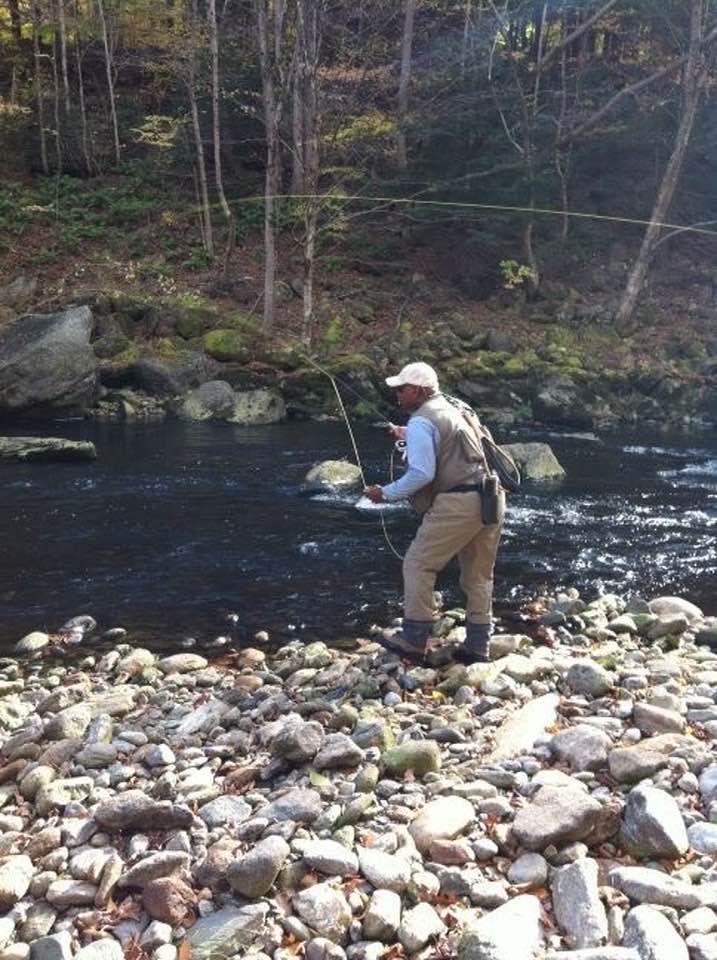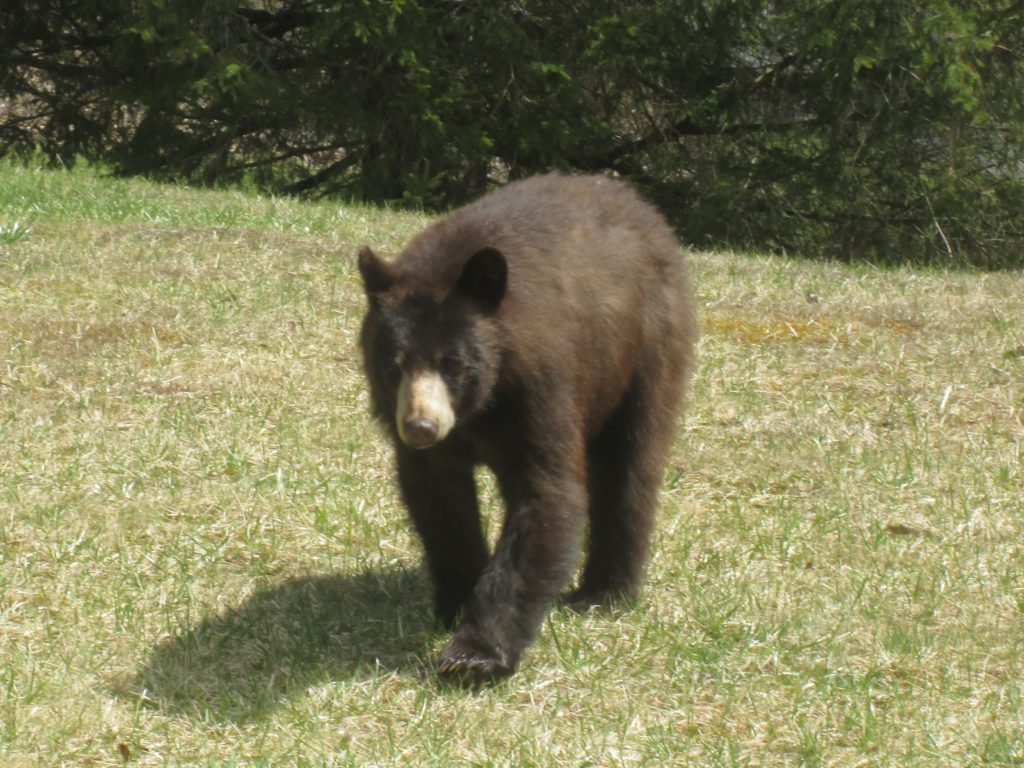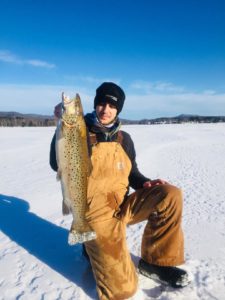According to Leanda Fontaine, Division of Fisheries and Wildlife Western (DFW) District Aquatic Biologist, they liberated their allotted supply of trout last week. Some 100,000 trout were allotted to the Western District.
The following Western District water bodies were stocked with trout during the weeks of May 4, May 11, and May 18:
Hoosic River (North Branch) in Clarksburg and North Adams, Hoosic River (South Branch) in Adams and Cheshire, Hudson Brook in Clarksburg and North Adams, Hemlock Brook in Williamstown, Green River in New Ashford, and Williamstown, Green River in Alford, Egremont and Great Barrington; Williams River in West Stockbridge and Great Barrington, the East, West and Mainstem of the Westfield River; Cold River in Florida and Charlemont, Chickley River in Charlemont and Hawley, Clesson Brook in Ashfield and Buckland, South River in Ashfield, Stones Brook in Goshen, Mill Brook in Cummington, Bronson Brook in Worthington, Depot Brook in Washington, Factory Brook in Middlefield, Buck and Clam Rivers in Sandisfield, Dunbar brook in Monroe, Pelham Brook in Rowe, Housatonic River (East Branch) in Hinsdale and Dalton, Housatonic River (Southwest Branch) in Pittsfield, Hop Brook in Tyringham and Lee, West Brook in Great Barrington and Lee, Beartown, Greenwater, and Goose Pond Brooks in Lee; Konkapot River in Monterey and New Marlborough, Little River in Huntington and Worthington, Town Brook in Lanesborough, Walker Brook in Becket and Chester, West Branch Brook in Chesterfield and Worthington, Westfield Brook in Cummington and Windsor, and Windsor Brook in Hinsdale and Windsor.
Recent lake stockings include: North Pond in Florida, Otis Reservoir, Lake Garfield, Stockbridge Bowl, Onota Lake and Goose Pond.
So, go catch a few of these fish. Be sure not to crowd out your fellow anglers and continue to practice social distancing. We don’t want to get careless and cause the Covid-19 virus to return and shut down things again.
Bass fishing is getting good now, too
On Thursday, May 14, at approximately 8:00 pm, 11-year old Michael Morrill of Lee was fishing in an undisclosed local lake with his father, Gregg Morrill. He was casting a big metal spoon (spinning lure) named the Laker Taker along the shoreline. It was getting late, so he made one last cast. He hooked into something heavy, in fact, he thought it was a sunken log. But then, his fishing rod bent sharply. Fortunately, he had the drag set on his reel so that the fish wouldn’t snap the line. He would reel it in a ways, and then the fish would make a run and pull some line off of his reel. It happened a couple of times, sometimes the fish would jump out of the water. Luckily the drag worked and the line didn’t snap.
Finally, he got the fish near the shoreline, but it was no way totally subdued. His dad finally had to step into the water and net it.
It was a huge largemouth bass. What a hawg! (bass fisherman’s term for a really large bass). It measured 21 inches long. They didn’t have a scale, but his dad guesstimated it to be around 10 lbs. Judging from the accompanying picture, I wouldn’t be surprised.
Michael then let the fish go. Later on, he began to have second thoughts for some of his friends and relatives felt that he should have kept it and had it mounted, or perhaps he could have gotten a bronze or gold medal from MassWildlife.
His mom Pamela Brown said that he felt better when he learned that at this time of year, the bass are on their spawning beds laying eggs and protecting them from predators. If he kept that bass, yellow perch and sunfish would probably eat all the eggs and tiny bass. In fact, back in the day, anglers could not keep a bass until after June 15, for that very reason.
Maybe the next time you catch that fish, Michael, you might want to keep it. Or, you can bring a tape measure and camera along to take a picture of it to send to the State. But in my book, you did the right thing that Thursday night.
Many thanks to Michael’s grandpa, Bill Brown, for giving me the heads up on this catch.
It’s also time for bull-heading
Bullhead fishing is best when the apple blossoms are in bloom. The meat is firmer and sweeter. That’s what the old timers used to say.
Dig up some worms or night crawlers and head for the pond just before darkness. Weight the worms down with non-toxic sinkers, and toss your line out into the pond to settle to the bottom and let it sit there. Prop up your fishing pole with the bail open to let the fish run without feeling any resistance (and not pull it into the pond).
Some anglers I know attach a little bell onto their fishing poles to indicate when a fish is biting. Others have small lights that they can see when the pole bobs up and down. I use longer shanked hooks as they make it easier unhooking them. Bullheads don’t mess around and have a tendency to swallow the hook before you know they have even nibbled on your bait.
Open up your portable chair, light up your lantern, have some German cool-ade and relax. Enjoy the sounds of the geese coming in for the night, the peepers and bull frogs and, depending on where you are fishing, the unmistakable eerie call of the loon.
Don’t feel like cleaning the fish when you come home at night? No problem. Fill a large pail of water and put the fish in there. They should be fine the next morning, provided you didn’t leave them out of the water too long. I usually put them on a stringer which allows them to stay alive until you leave.
Spring Turkey Hunting Season is over
The spring turkey hunting season ended yesterday. Time to clean and oil up the turkey gun and lock it away until this fall.
Good friend Robert (Gus) Murray of East Nassau, NY passed on some interesting information that he read in a recent issue of the New York State Department of Environmental Conservation (DEC) Hunting & Trapping Newsletter. It mentioned Bill Hollister, formerly of Pittsfield, a veteran spring turkey hunter who now lives in New York that bagged a bird in 2018 with rare triple spurs
Retired DEC biologist and avid turkey hunter, Hollister knew he had found something rare after he bagged a gobbler in Columbia County. Once he had the bird in hand, he saw that it had three spurs on each leg!
According to NYDEC in general, most gobblers have spurs and the length of the spurs is an indication of a bird’s age. On rare occasions, a gobbler will fail to develop one or both spurs and even more rare still, is a gobbler with two spurs on a leg. A bird with triple spurs is almost unheard of.
Over the past decade, DEC staff have examined thousands of legs from turkeys killed by hunters in the fall and have seen missing spurs and double spurs, but never a triple spur.
From the Mississippi Department of Wildlife, Fisheries, and Parks: “Mature gobblers without spurs, or with only one spur, comprise less than two percent of the total harvest. It is more common for gobblers to be missing a spur on only one leg than to not have any spurs. Another abnormality is when gobblers have multiple spurs.
There are only two reports of birds with triple spurs – one of which is from Mississippi and the other is Hollister’s. A triple spur is quite the find!
Thanks to Gus for passing this information to us.
Memorial Day
This year, with the absence of Memorial Day parades due to Covid-19, you might have a little time to pick up the fishing rod and do a little fishing. If you have a quiet moment, please take a moment or two to remember those servicemen and women who have served and made the ultimate sacrifice for our country. You also might want to remember and thank the doctors, nurses, first responders and others who also suffered or lost their lives fighting this different, most recent enemy.












